Jagannath Temple
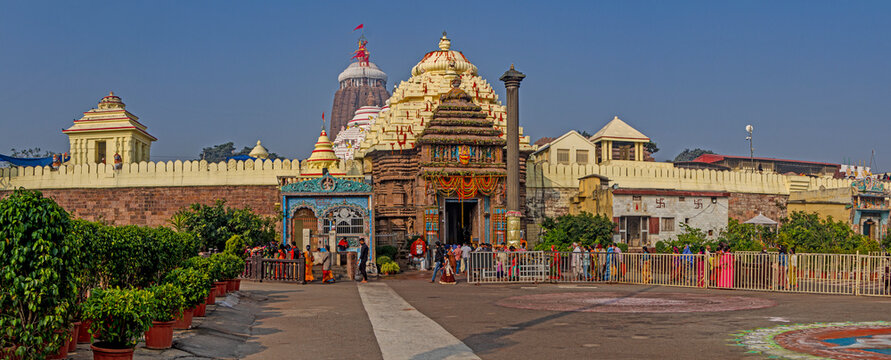
The Jagannath Temple in Puri, Odisha, is one of India’s most revered spiritual landmarks, drawing millions of devotees and pilgrims every year. Dedicated to Lord Jagannath, an incarnation of Lord Vishnu, this 12th-century temple is a marvel of Kalinga architecture, with its towering spire visible from miles away.
The Jagannath temple is famous for its mystical rituals, including the Mahaprasad, cooked in earthen pots over traditional woodfire, and the flag atop the temple that mysteriously defies the wind’s direction.
One of the most significant festivals held here is the Rath Yatra, where massive, ornately decorated chariots carry the deities through the streets of Puri. The temple is also known for its unique traditions, such as the disappearance of the temple’s shadow at any time of the day. Standing as a symbol of eternal faith and devotion, the Jagannath Temple is a must-visit for those seeking divine blessings and a deep spiritual experience.
Historical Significance
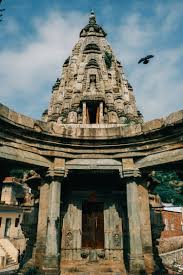
The historical significance of the Jagannath Temple extends far beyond its construction. While the temple we see today was built in the 12th century by King Anantavarman Chodaganga Deva of the Eastern Ganga Dynasty, the worship of Lord Jagannath has ancient roots that trace back to the Vedic and even pre-Vedic periods.
Some historians speculate that the origin of Jagannath worship dates back to the Treta Yuga, around 5000 years ago, when the idol of Lord Jagannath, along with his siblings Balabhadra and Subhadra, was believed to have been brought to the temple’s site by the ancient sages.
The region of Puri, historically known as ‘Sri Kshetra,’ has long been a revered place of pilgrimage. The first recorded references to the temple can be found in the writings of ancient scholars like Kalidasa, who mentions the temple in his literary works, highlighting its early importance in the cultural and religious landscape of India.
During the reign of King Chodaganga Deva, the temple gained prominence as a center of Hindu pilgrimage, marking an era of architectural and cultural renaissance. It was under his patronage that the magnificent temple structure was constructed, with the sanctum sanctorum housing the deities in their distinctive form – a representation of the divine that remains unique in the world of Hindu temples.
The king also played a significant role in popularizing the worship of Lord Jagannath among the local people, further embedding the temple into the social and spiritual fabric of Odisha.
Over the centuries, the Jagannath Temple became a symbol of resistance against invaders. Though it faced several invasions, particularly from Muslim rulers like Kalapahad in the 16th century, the temple stood resilient, a beacon of Hindu spirituality and identity. During these turbulent times, the temple’s importance as a cultural and religious hub only grew stronger.
In fact, the infamous Rath Yatra festival became a symbol of defiance against foreign rule, with the idols of Lord Jagannath and his siblings being taken out on chariots to the Gundicha Temple, as a mark of sovereignty and divine protection.
The legacy of the Jagannath Temple also includes its role in the Bhakti movement. Great saints and philosophers, like Adi Shankaracharya, Ramanuja, and Chaitanya Mahaprabhu, visited Puri and spread the philosophy of devotion to Lord Jagannath. Chaitanya Mahaprabhu, in particular, established a strong connection between Lord Jagannath and the practice of bhakti (devotion), shaping the temple as a center of Vaishnavism and spreading its influence across India and beyond.
In the modern era, the temple remains a place of pilgrimage for millions of devotees from all corners of the world. It has also become a UNESCO World Heritage Site, recognizing not just its architectural beauty but its deep cultural and spiritual significance. The Jagannath Temple, with its history of resilience, faith, and devotion, continues to stand as an enduring symbol of India’s spiritual and cultural heritage.
Architectural Marvel
The Jaganath temple is a magnificent example of Kalinga architecture, featuring a towering structure known as the Shikhar or Deul, which rises to about 214 feet (65 meters). It follows a classic Pancharatha design, consisting of four main structures:
- Vimana (Sanctum Sanctorum) – Houses the deities of Lord Jagannath, Balabhadra, and Subhadra.
- Jagamohana (Audience Hall) – A spacious hall where devotees gather for darshan.
- Natamandira (Dancing Hall) – Used for religious music and dance performances.
- Bhoga Mandapa (Offering Hall) – Where the temple’s sacred Mahaprasad is prepared and offered.
One of the temple’s most mysterious aspects is its defiance of scientific laws, including:
- The flag atop the temple always flutters in the opposite direction of the wind.
- The temple’s shadow is never visible at any time of the day.
- The sound of the ocean disappears once you step inside the temple premises.
The Mystical Deities of Jagannath
Unlike conventional Hindu idols, the deities of Lord Jagannath, Balabhadra, and Subhadra are made of sacred Neem wood (Daru). Every 12 to 19 years, a unique ritual known as Nabakalebara takes place, during which the old wooden idols are replaced with new ones in a secretive overnight ceremony. The exact process is known only to a few priests, adding to the temple’s mystique.
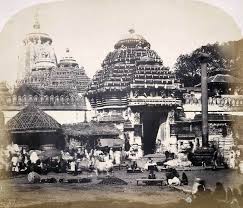
The Mahaprasad – Divine Food Offering
The Mahaprasad of Jagannath Temple is one of the most sacred and delicious offerings in Hindu temples. It is cooked using traditional methods in earthen pots over firewood. The unique part of this offering is that the topmost pot gets cooked first, defying normal cooking logic. The Mahaprasad is served at Anand Bazaar, the world’s largest open-air food market, where thousands of devotees partake in the divine feast.
The Grand Rath Yatra
One of the most celebrated festivals of Jagannath Temple is the Rath Yatra, also known as the Chariot Festival. This festival takes place in the month of June-July (Ashadha Shukla Dwitiya) and is considered one of the holiest Hindu celebrations. Key highlights of Rath Yatra include:
- Three gigantic chariots are built for Lord Jagannath, Balabhadra, and Subhadra.
- The deities are ceremoniously taken from the temple to Gundicha Temple, about 3 km away.
- Thousands of devotees pull the chariots, believing it to be an act of immense virtue.
- After nine days, the deities return in a return journey known as Bahuda Yatra.
This festival is attended by millions of people, making it one of the largest religious gatherings in the world.
Unique Rituals and Traditions
The Jagannath Temple is known for several unique traditions that make it stand apart from other Hindu temples:
- No Brahmin Priests: Unlike most temples, the temple rituals are performed by a special class of priests known as Daitapatis, believed to be descendants of the tribal worshippers of Lord Jagannath.
- The Sudarshan Chakra Mystery: The Sudarshan Chakra on top of the temple appears the same from all directions.
- The Temple Kitchen: The temple has the largest kitchen in the world, where over 56 varieties of Mahaprasad are prepared daily.
- Devotees Can Touch the Deities: Unlike most Hindu temples where touching the idols is forbidden, during the Rath Yatra, devotees can get close to the deities.
- The Hidden Entrance of the Temple: The temple has four gates, with the Singhadwara (Lion Gate) being the main entrance. It is believed that only the most pious souls can enter effortlessly.
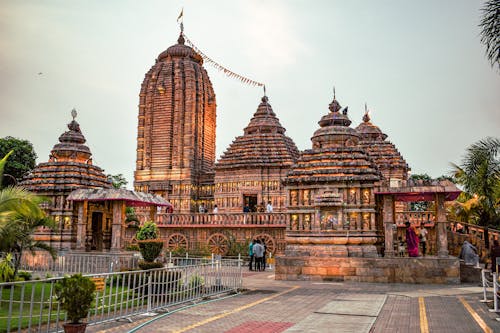
Best Time to Visit Jagannath Temple
The Jagannath Temple in Puri is a major pilgrimage destination and cultural hub that attracts visitors year-round. However, certain times of the year stand out for their significance, atmosphere, and festive celebrations. Here’s an expanded look at the best times to visit the Jagannath Temple:
1. Rath Yatra (June – July):
The Rath Yatra is undoubtedly the most significant and grandest festival at the Jagannath Temple. Held annually during the months of June or July, this festival is a must-experience event for anyone visiting the temple. During the Rath Yatra, the idols of Lord Jagannath, his brother Balabhadra, and sister Subhadra are ceremoniously placed on huge, elaborately decorated chariots, and the procession moves through the streets of Puri.
Devotees from around the world join the procession, pulling the chariots through the city in an act of devotion and love. The entire city of Puri is bathed in a festive spirit, with vibrant decorations, rituals, music, and chanting. The event draws millions of pilgrims and tourists, making it a unique spiritual experience. It’s a time when the temple is at its most lively and immersive.
2. Winter (October – February):
If you prefer a quieter and more comfortable visit to the temple, the winter months from October to February are ideal. The weather is cool and pleasant, making it perfect for exploring the temple and the surrounding areas without the oppressive heat. This time of year is also more favorable for sightseeing and engaging in the local culture, as you can comfortably walk around Puri and visit nearby attractions. Moreover, these months offer a serene atmosphere that allows for a more introspective and peaceful experience of the temple’s spiritual aura.
3. Snana Yatra (May – June):
The Snana Yatra takes place in the month of June, a few weeks before the Rath Yatra, and is another important event in the temple’s annual calendar. During Snana Yatra, the deities are given a ritualistic bath with water drawn from the holy wells of Puri. It’s believed that this ritual purifies the deities before the grand procession during the Rath Yatra. Though the Snana Yatra is not as widely attended by tourists as the Rath Yatra, it offers a more intimate glimpse into the temple’s rich spiritual practices, with unique rituals and crowds of devotees.
4. Chandan Yatra (April – May):
Held during the summer months of April and May, the Chandan Yatra is a beautiful and significant event for the temple. During this festival, the idols of Lord Jagannath, Balabhadra, and Subhadra are adorned with sandalwood paste, which is believed to cool the deities during the hot months. The temple hosts grand rituals and processions, with devotees also taking part in boat rides on the Narendra Tank. This period offers a peaceful yet vibrant experience for visitors, as the devotees immerse themselves in the soothing rituals of the festival.
5. Makar Sankranti (January):
Makar Sankranti, celebrated in January, is another time to visit the Jagannath Temple. The festival marks the transition of the Sun into the zodiac sign of Capricorn. On this day, a large fair is organized at the temple, and people gather to offer prayers and partake in cultural activities. The significance of Makar Sankranti lies in the belief that it brings prosperity and blessings, making it a time of great devotion and spiritual fervor.
6. Local Weekends and Public Holidays:
If you’re looking for a more relaxed visit without the crowds of festivals, visiting the Jagannath Temple on weekdays, particularly during non-peak hours, can offer a quieter experience. However, keep in mind that weekends (especially public holidays and school vacations) can attract more visitors. Despite the crowds, the temple’s spiritual ambiance remains powerful, and the rituals still continue as usual.
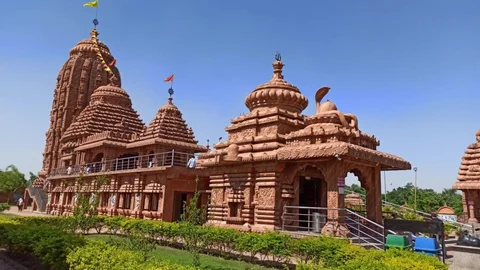
How to Reach Jagannath Temple
By Air:
The nearest airport to the Jagannath Temple is Biju Patnaik International Airport in Bhubaneswar, located about 60 km from Puri. The airport is well-connected to major cities like Delhi, Kolkata, Chennai, Mumbai, and Bengaluru, with both domestic and limited international flights. From Bhubaneswar, you can take a taxi, bus, or hire a private vehicle to reach Puri. The drive from Bhubaneswar to Puri takes approximately 1.5-2 hours, depending on traffic.
By Rail:
Puri has a major railway station, Puri Railway Station, which is well-connected to other cities across India, including Kolkata, Delhi, Chennai, and Mumbai. The station is just a short distance (about 2-3 km) from the Jagannath Temple, making it easy to access by a quick taxi or auto-rickshaw ride. The station also serves as a major stop on the Kolkata-Chennai railway route, ensuring convenient access for travelers coming from both the east and south of India.
By Road:
Puri is well-connected by road to Bhubaneswar (60 km), Cuttack, and other nearby cities in Odisha. You can opt for state-run buses, which are a cost-effective option, or private taxis for a more comfortable and convenient ride. The National Highway 316 connects Puri to Bhubaneswar, and the roads are generally in good condition, making for a pleasant journey. The drive from Bhubaneswar to Puri takes around 1.5 to 2 hours.
Additionally, long-distance buses operate from various cities like Kolkata, Bhubaneswar, and Cuttack to Puri, offering an economical mode of travel for pilgrims and tourists.
Local Transportation in Puri:
Once you arrive in Puri, the Jagannath Temple is easily accessible by various modes of local transport:
- Auto-rickshaws and cycle rickshaws are available to take you to the temple from the railway station, bus stand, or any part of the town.
- You can also rent a bike or scooter for a more independent and leisurely exploration of the town.
Nearby Attractions
While visiting Jagannath Temple, explore these nearby attractions:
- Puri Beach: A serene beach perfect for relaxation.
- Konark Sun Temple (35 km): A UNESCO World Heritage Site known for its intricate stone carvings.
- Chilika Lake (50 km): India’s largest coastal lagoon, famous for birdwatching and dolphin sightings.
- Gundicha Temple: The final destination of the Rath Yatra.
- Markandeshwar Temple: An ancient temple dedicated to Lord Shiva.
Conclusion
The Jagannath Temple in Puri, Odisha, stands as a timeless symbol of devotion, spirituality, and cultural significance. It is not merely a religious monument but a profound expression of faith that brings together people from all walks of life. The intricate rituals, vibrant festivals like Rath Yatra, and the temple’s rich history invite visitors to experience a deeper connection with the divine and the essence of Hindu philosophy. The grandeur of its architecture, coupled with the serenity of the surroundings, makes it a place of reflection and introspection.
For pilgrims, it offers a chance to seek spiritual solace, while for history and culture enthusiasts, it serves as a treasure trove of ancient traditions, art, and architecture. The temple is not just a physical structure but a spiritual epicenter where devotion and cultural legacy meet, creating an atmosphere of transcendence.
As you step into the temple’s sacred precincts, you become a part of a tradition that has stood the test of centuries, offering a sense of peace and enlightenment. Visiting the Jagannath Temple is more than just a journey through space; it is a journey through time, culture, and the eternal human quest for divine connection. Whether you come seeking blessings, knowledge, or simply to admire its architectural magnificence, the Jagannath Temple in Puri will leave you with a deep sense of fulfillment and spiritual enrichment.
IF YOU LIKE THESE ARTICLE
DO CHECK THESE ARTICLES TOO
FOR MORE INFO

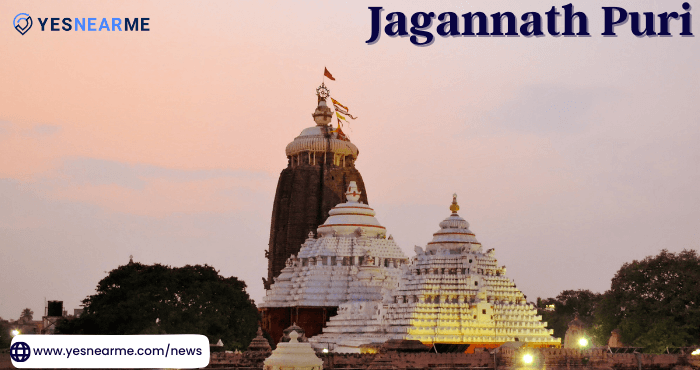





Recent Comments